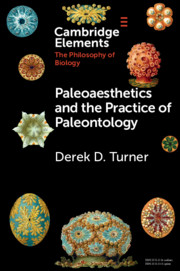Element contents
Paleoaesthetics and the Practice of Paleontology
Published online by Cambridge University Press: 12 November 2019
Summary
- Type
- Element
- Information
- Online ISBN: 9781108671996Publisher: Cambridge University PressPrint publication: 24 October 2019
References
- 23
- Cited by



